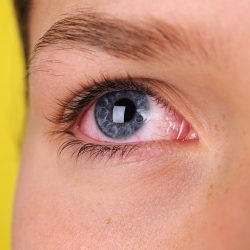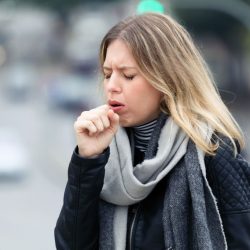While most insect bites are harmless, some can cause reactions of varying degrees of severity. People with allergies need to be particularly vigilant. Fortunately, these accidents are rare, and for most of us, a few precautions are all that’s needed to cope better with these summer enemies.
Biting insects belong to the Hymenoptera order of insects. Hymenoptera venoms cause local toxic reactions in all victims and allergic reactions only in those already sensitised. The severity of the reaction depends on the dose of venom and the extent of prior sensitisation.
When you are stung by an insect, the pain is not necessarily immediate, and some stings are even painless. To recognise an insect bite when you haven’t seen the culprit in action, you can rely on the appearance of a red pimple on the skin, sometimes accompanied by swelling.
How do you recognise the different insect bites?
Recognising insect bites is essential for choosing the right treatment and avoiding complications. Here are some key indications for identifying the most common bites:
Mosquito bite :
- Symptoms: A mosquito bite usually manifests itself as mild to moderate itching. The affected area may show a small red bump, often swollen and irritated.
- Particularities: Mosquitoes inject a substance into the skin that prevents the blood from clotting, resulting in this itchy reaction.
- Advice: Avoid scratching the bite to prevent inflammation or infection.
Stinging insects (bees, wasps, hornets):
- Symptoms: These stings are characterised by sharp, immediate pain, followed by a sensation of heat and sometimes throbbing. There may also be redness and localised swelling.
- Characteristics: The venom injected by these insects causes a rapid inflammatory reaction. In the case of bees, the stinger often remains embedded in the skin.
- Advice: Quickly remove the stinger if present, and apply a cold compress to reduce swelling.
Ant or horsefly sting:
- Symptoms: An immediate sensation resembling a bite, followed by itching. These bites can be particularly painful and irritating.
- Characteristics: Ants, like fire ants, inject an acid venom that causes a burning sensation. Horseflies, on the other hand, cut the skin before sucking the blood.
- Advice: Clean the area with soap and water to minimise the risk of infection.
By recognising the distinctive signs of each type of bite, you can react more effectively and choose the right treatment, whether medicinal or natural. In our specialist online pharmacy, we offer a range of homeopathic and natural products to provide effective relief from these discomforts. Don’t forget that in the case of severe allergic reactions, medical advice is essential.
What are the symptoms of insect bites?
The symptoms of an insect sting or bite occur when the animal injects a poison or other substance into the skin. The body reacts differently, depending on how sensitive it is or how many times you have been stung. The reaction can vary from slight local swelling to a severe allergic reaction. Common symptoms caused by insect bites include the following:
- Redness
- Swelling
- Itching
- Pain
In some allergic individuals, and in rare cases, the sting can lead to what is known as anaphylactic shock.
Some naturopathic advice to limit the inconvenience of insect bites
Don’t scratch:
This makes the itching worse, especially in the case of a mosquito bite. For relief, simply rub the palm of your hand gently over the bite. As long as the skin’s reaction remains limited, you can soothe the itching with an appropriate homeopathic medicine.
Moisten the area of the sting to cool the skin and soothe the itch:
If possible, apply ice (wrapped in a tea towel, for example). This will relieve most sting pain. Be careful not to leave the ice on for more than fifteen or twenty minutes.
Bee sting :
In the event of a bee sting, carefully remove the stinger if it has remained in the skin. Above all, avoid crushing the venom sac if it is still attached.
Tick bite :
If a tick is attached to the skin, it should be extracted, taking care to remove the head (using a tick remover, available from pharmacies, makes this a simple and safe procedure), and then disinfecting the bite. Never use substances such as alcohol, ether, petroleum jelly or petrol to remove the tick, as this may cause the tick to regurgitate, increasing the risk of transmission of Borrelia, the agent of Lyme disease. The area of the bite should be monitored for at least a month to detect any redness as soon as it appears.
Spider, scorpion and auklet bites:
In the event of a spider bite, the best thing to do is to see a doctor.
In France, scorpions are not dangerous. Apply ice to the sting.
If you are bitten by an Augustat, take a hot shower.
What about homeopathy for insect bites?
For prevention: Ledum Palustre 9CH
The Ledum Palustre 9CH homeopathic strain is of particular interest in preventing the discomforts associated with insect bites. Particularly suitable for people with a tendency to react strongly to insect bites, it offers a preventive approach that deserves special attention. It should be stressed from the outset that Ledum Palustre 9CH is not a substitute for conventional antimalarial treatments. Nevertheless, it can play a significant complementary role in preventing exaggerated reactions to these bites.
Why should you be interested in Ledum Palustre 9CH? In the context of homeopathy, this strain is renowned for its soothing properties and its ability to limit inflammatory reactions. In the event of an insect bite, the body’s reaction often manifests itself as itching, redness or swelling. Although these symptoms are generally benign, they can be a source of great discomfort, particularly for people with sensitivities or allergies.
The recommended dosage for Ledum Palustre 9CH is 5 granules a day during the period of exposure to insects. This dosage is both simple and not restrictive, making it easy to incorporate into your daily routine. The purpose of using Ledum Palustre 9CH in this dosage is to prepare the ground, i.e. to condition the body to react less intensely in the event of a bite. It is important to note that this preventive approach does not guarantee total immunity to bites, but aims to minimise the inconvenience.
The argument in favour of using Ledum Palustre 9CH lies in its gentle, non-invasive approach. Unlike chemical treatments or repellents, which are often cumbersome and have undesirable side-effects, this homeopathic strain offers a natural alternative with no significant toxicity. What’s more, with its holistic approach, homeopathy takes into account the individual as a whole, aiming to strengthen his or her natural defences rather than simply masking the symptoms.
In the event of bites :
Ledum palustre 5CH :
- Usefulness and Effectiveness: Particularly recommended for mosquito bites, this remedy is effective when the skin appears mottled and cold to the touch. Ledum palustre works by reducing inflammation and the sensation of cold in the affected area.
- Recommended dosage: Take 5 granules every hour, spacing out doses as symptoms improve.
Apis mellifica 15CH :
- Usefulness and Effectiveness: This remedy is used for stings causing pink, stinging and burning oedema, especially when symptoms improve with the application of cold. Apis mellifica is effective in reducing severe inflammatory reactions.
- Recommended dosage: 5 granules every hour, adjusted as symptoms progress.
Urtica urens 5CH :
- Usefulness and effectiveness: Indicated for intense itching, as in cases of eczema or contact urticaria, especially if these do not improve with cold. Urtica urens effectively relieves itching and burning sensations.
- Dosage: 5 granules of Urtica urens homeopathic medicine every hour, adjusted according to the reduction in symptoms.
Belladonna 9CH :
- Usefulness and effectiveness: Recommended for inflammations with redness, heat and throbbing pain, aggravated by touch. Belladonna is known for its anti-inflammatory properties, which are particularly useful for acute skin reactions.
- Recommended dosage : Take 5 granules of Belladonna every hour, decreasing the frequency as the condition improves.
Lung histamine 15CH :
- Usefulness and effectiveness: Recommended for severe allergic reactions, this remedy helps to modulate the body’s allergic reaction mechanism, which can be crucial in the case of exaggerated reactions to a sting.
- Recommended dosage: 5 granules 3 to 6 times a day.
These homeopathic remedies, available from your specialist online pharmacy, offer a natural, personalised approach to managing the symptoms associated with insect bites. Each remedy is tailored to specific symptoms, allowing for more targeted and effective treatment.
What should I do if the bite starts to get infected?
In a situation where a bite is showing signs of infection, a combined homeopathic and topical approach is recommended. On the one hand, Tarentula cubensis 9 CH, known for its curative properties in cases of infection, can be taken in synergy with Calendula officinalis 5 CH. Calendula acts as an anti-inflammatory and healing agent, helping to reduce inflammation and promote skin repair. The suggested dosage is 5 granules of each, morning and evening, over a period of one week.
In parallel, for local treatment, the use of an ointment such as Cicaderma® is recommended. Applied directly to the affected area, this ointment can help reduce inflammation and speed up the skin’s healing process. This dual treatment method, combining oral intake of homeopathic remedies and local application of an ointment, offers a holistic approach to managing infected bites.
After one or more wasp, hornet, bee or bumblebee stings, it is important to recognise the situations requiring urgent hospitalisation. In other cases, simple steps can be taken to relieve the local reaction around the sting.






